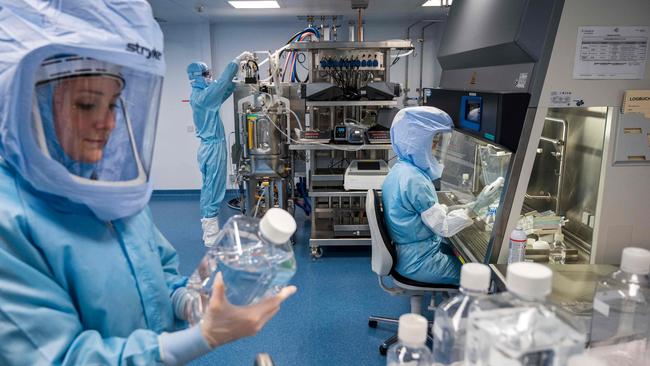Ramp up R&D to give homegrown vaccines a shot

But how is the vaccine strategy going? There is continuing criticism of the lack of urgency and ambition, particularly targeting comments from top officials that the vaccine rollout is “not a race” and “we’re not in a hurry”. Au contraire. We should be in a hurry.
Aren’t we in an international race to get the economy back on track, to open borders and to get people back into jobs? Make no mistake that getting the vaccine out quickly is still in our interests.
If only we had invested more in Australian capabilities and in particular in messenger RNA manufacturing capacity. And while we can’t wind back the clock, we can make sure we are equipped for the next pandemic and chart a path to becoming a future vaccine-manufacturing hub for the Asia-Pacific region; if annual boosters are required this will become a major industry.
Traditional vaccines inject a harmless version of a virus, or a viral protein, into our bodies to trigger an immune response that protects against the actual virus. In contrast, mRNA vaccines essentially instruct our cells how to make a viral protein that triggers the immune response.
The Oxford-AstraZeneca vaccine — a traditional viral vector vaccine — uses a harmless carrier virus encoding a coronavirus protein. It has high manufacturing costs as it requires very large-scale cell culture to make the modified viral particles. These need to get into the nucleus of cells, which may make them less effective.
But mRNA vaccines look like they’ll be cheaper and more effective, and it should be possible to package one RNA after another to immunise individuals against a series of different threats.
One can roll these out since RNA molecules are essentially all the same, they’re all negatively charged strings of bases — A, C, G and U. You can make any different RNA just by changing the order of the letters. If you can synthesise, package and deliver one RNA, you can deliver any RNA.
In contrast, viral proteins are all different — they all have different shapes and charge, some fold nicely, others stick together in a mess.
And while harmless carrier viruses work, too, it’s not clear that you can keep using the same carriers again and again. In short, making vaccines with RNA is a great idea.
But it wasn’t easy. You can’t just inject a wad of RNA. The human body sees RNA as foreign and mounts a shock response.
You have to be careful about designing the RNA, though. Researchers found that if, instead of using the normal building blocks of RNA, they used a chemical analog called pseudouridine, and if they avoided bits of RNA that stick together to make double helices, the body responded best, with a measured immune response against the protein the RNA encoded.
And these vaccines work. Pfizer and Moderna showed that mRNA technology rapidly can produce stunningly effective vaccines.
People now are asking whether humanity could make a vaccine against the common cold. An mRNA vaccine against malaria is being trialled. We hope it’s a game changer. Such mRNA vaccines are quick, they can be changed rapidly (as pathogens change and new strains emerge) and they seem to be more effective than anyone had hoped.
And vaccines are just part of the story. Delivering RNA represents a new mechanism for helping the body to generate its own therapeutic agents. This field is just beginning. Now is the time for Australia to get behind it.
Australia has superb academic capability in RNA research. But what we lack is any co-ordinated research and development capability that could scale up and develop new vaccines and other therapeutic RNAs.
This will require new facilities to be developed by large existing vaccine players such as CSL — which is manufacturing the AstraZeneca vaccine but as yet lacks an RNA vaccine production line — or by other, smaller biotech companies.
The manufacturing translation scheme that is part of the government’s Modern Manufacturing Initiative could help provide funding to turn our academic capability into large-scale manufacturing capacity.
We need to proceed on two fronts. First, we need to co-ordinate Australian academic research on RNA therapeutics. It probably would cost as little as $20m to $100m to establish an R&D facility. And it probably should be done in partnership between universities and an Australian biotech company.
Second, we need to ramp up our manufacturing capability right away. It will be too late for COVID-19 — at least this phase of it. But RNA vaccines and booster shots will become more important in future years.
What we need is long-term thinking, political will and a rekindling of our government’s confidence in backing Australia’s ability.
Merlin Crossley is deputy vice-chancellor academic and professor of molecular biology at UNSW Sydney. Richard Holden is professor of economics at UNSW Sydney and president-elect of the Academy of the Social Sciences in Australia.


Australia’s performance last year in managing the public health and economic crises caused by the pandemic was world class.